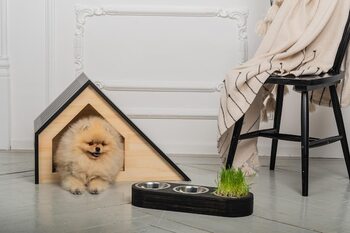Redefining spaces: the art of living in harmonious condominiums

Redefining your space in a condominium can turn into a sublime and enjoyable experience. In 'Redefining Spaces: The Art of Living in Harmonious Condominiums', we will explore how the combination of smart design, cozy decor, and a vibrant community can elevate your quality of life. Discover strategies to maximize every corner, optimize functionality, and create an environment that reflects your personality, all while fostering meaningful relationships with your neighbors. Join us on this journey towards a more harmonious and balanced lifestyle.
The importance of interior design in condominiums
Interior design in condominiums plays a fundamental role in creating an environment that is not only functional but also welcoming and aesthetically pleasing. In small spaces, every choice of color, furniture, and layout becomes an opportunity to maximize the use of the available area and reflect the personality of the resident. Good interior design can transform a simple room into a personal sanctuary, where each element tells a story and contributes to the overall harmony of the space. Additionally, by considering aspects such as natural lighting and airflow, not only is the home beautified, but the quality of life of its occupants is also improved.
Additionally, the interior design has a significant impact on community relationships within condominiums. A well-designed environment can encourage social interactions among neighbors by creating attractive common areas that invite shared moments together. Carefully designed common areas —such as lounges, gyms, or gardens— promote a sense of belonging and community among residents, making them feel more connected. In this way, beyond being simply an aesthetic issue, interior design becomes a key facilitator for achieving harmonious and enriching cohabitation in shared environments.
2. Tips to maximize small spaces
Maximizing small spaces in a condominium may seem like a challenge, but with some design tricks and creativity, you can transform even the smallest areas into functional and cozy places. One of the most effective strategies is to choose multifunctional furniture that serves multiple purposes. For example, a sofa bed or an expandable table can adapt to your daily needs without taking up too much space. Also, consider using vertical shelves that take advantage of the height of your walls; this will not only help you store books and decorations, but it will also create a sense of spaciousness in the room.
In addition to choosing the right furniture, it is essential to think about the use of color and lighting. Light tones on walls and floors can make a small space feel more open and airy, while good natural or artificial lighting will enhance the overall atmosphere. Use mirrors strategically to reflect light and create the illusion of more space. Do not underestimate the power of order: keeping each object in its place and getting rid of the unnecessary will make your home feel more spacious and serene. Remember that every corner counts; small solutions like hooks on doors or storage under the bed can make a big difference in how you perceive your home.
3. Colors and textures that create harmony
When selecting colors and textures for your condominium, it is essential to create an environment that promotes harmony and tranquility. Neutral tones, such as white, beige, and soft gray, serve as versatile bases that allow other decorative elements to stand out without overwhelming the space. Incorporating color accents through cushions, artwork, or plants can transform a monotonous area into a cozy and vibrant corner. Warm color palettes, such as terracotta tones or soft greens, not only bring warmth but also evoke a connection with nature, which is essential for renewing energy within the home.
Textures play an equally important role in creating a harmonious space. The combination of soft materials like wool or cotton with harder surfaces like wood or metal can add depth and visual interest to any room. Elements like woven rugs and light curtains contribute to a sense of comfort and coziness while balancing the harder areas of the furniture. Through this conscious mix of colors and textures, you can cultivate an environment that is not only aesthetically pleasing but also fosters an overall sense of peace and well-being in your shared home.
4. Creating welcoming common areas: the heart of the condominium
Creating inviting common areas in a condominium is essential for fostering a sense of community and belonging among residents. These shared spaces, such as gardens, lounges, or terraces, should be designed not only to be functional but also to encourage interaction and relaxation. Incorporating comfortable furniture, warm lighting, and natural elements like plants can transform these spaces into havens where everyone feels welcome. The choice of soft colors and cozy materials also plays a crucial role in creating an environment that invites people to spend time together, thereby promoting closer bonds among neighbors.
In addition to aesthetics, it is essential to consider how these areas can adapt to different activities and needs. For example, having versatile spaces that allow for informal meetings as well as community events can enrich the experience of living in the condominium. Incorporating outdoor games or spaces for practicing yoga also adds value to the common areas, turning them into places that promote both personal well-being and social cohesion. By creating these inclusive and versatile environments, not only is the use of physical space redefined, but a culture of collaboration and friendship is cultivated that enhances the quality of life within the condominium.
5. Strategies to foster a united community
Fostering a united community in a condominium is essential for creating a welcoming and harmonious environment. One of the most effective strategies is to organize regular events that promote interaction among neighbors. From food fairs to outdoor movie nights, these activities not only allow residents to socialize but also help build meaningful connections. By involving everyone, from families to singles, a sense of belonging and mutual support can be cultivated that will enrich the experience of living in the condominium.
Another key strategy is to establish common interest groups, such as book clubs or art workshops. These initiatives not only promote creativity and learning but also serve as a platform for cultural exchange and collaboration among residents. Furthermore, having an active group facilitates communication about shared concerns or community projects. In this way, each neighbor can feel heard and valued, which significantly contributes to the cohesion of the group and the overall well-being of the living environment.
6. How to integrate technology for greater convenience
Integrating technology into your condominium not only facilitates daily tasks but also helps create a more comfortable and efficient environment. From smart lighting systems that allow you to adjust intensity and color according to your mood, to programmable thermostats that optimize energy consumption, each device can be an ally in the search for harmony in your home. Additionally, having home automation options allows you to manage all these elements from your smartphone, giving you total control over your space no matter where you are.
Security is another fundamental aspect that can be improved through technology. With smart surveillance cameras and electronic lock systems, you can have greater peace of mind knowing that your home is protected. Likewise, digital communication platforms among neighbors facilitate the creation of a united and collaborative community, where sharing relevant information or coordinating activities becomes simple and accessible. By integrating these technological solutions, you not only optimize the functionality of your condominium but also elevate the quality of life for you and your neighbors, creating a truly harmonious environment.
7. Green spaces: the connection with nature within the condominium
The incorporation of green spaces within the design of a condominium not only beautifies the environment but also establishes an essential connection with nature. These outdoor spaces, whether community gardens, landscaped terraces, or small parks, act as refuges where residents can escape the urban hustle. The presence of plants and green areas promotes relaxation and emotional well-being, becoming a perfect space to enjoy a cup of coffee in the morning or share pleasant moments with friends and neighbors in the evening. Additionally, these natural environments encourage local biodiversity, creating habitats for birds and butterflies that enrich our daily experience.
The connection with nature within the condominium also has tangible benefits in terms of health and well-being. Studies have shown that spending time in green spaces can reduce stress, improve mood, and increase levels of physical activity. By integrating well-designed green areas into the daily life of the condominium resident, everyone is invited to engage in outdoor activities such as morning yoga, family picnics, or simply enjoying peaceful walks among flowers and trees. In this way, green spaces become a vital extension of the home, promoting not only a healthier lifestyle but also strengthening the sense of community among residents.
8. Customization without losing functionality
The personalization of a space in a condominium is not just about choosing a color palette or furniture that we like, but about creating an environment that adapts to our needs and lifestyle. In doing so, it is essential to maintain functionality, ensuring that each element has a clear purpose. For example, incorporating smart storage solutions like open shelves or benches with internal space can help organize the home without sacrificing design. In this way, we achieve a visual harmony that reflects our personality while maximizing the use of the available space.
Additionally, personalization can extend beyond decorative objects and furniture; it also includes the way we choose to distribute our spaces. An open layout can foster a connection between common and private areas of the home, allowing for smooth interactions with family or guests. Incorporating natural elements like live plants or local art not only beautifies the environment but also adds a meaningful personal touch. Let us remember that living in a condominium involves sharing spaces with others; therefore, by personalizing our home without losing functionality, we contribute to a harmonious atmosphere where everyone can enjoy the environment created together.
9. Sustainable trends in condominium living
In the pursuit of a more harmonious lifestyle within condominiums, sustainable trends have gained significant relevance. More and more residents are drawn to practices that not only benefit their immediate surroundings but also promote the health of the planet. From the use of recycled materials in decoration to the implementation of vertical gardens in common areas, these elements not only add aesthetics but also foster ecological awareness among neighbors. Creating a sustainable environment becomes an opportunity to unite the community and establish shared goals that affirm the commitment to the environment. Furthermore, initiatives such as recycling and composting are gaining traction in many condominium communities. By establishing collection points and educating residents about sustainable practices, a sense of collective responsibility can be generated that transcends the individual doors of each home. Incorporating green technologies, such as solar panels or rainwater harvesting systems, not only reduces long-term costs but also improves air quality and the overall environment. Ultimately, embracing these sustainable trends in condominium living contributes to creating healthier and more harmonious spaces where everyone can thrive together.
10. The influence of lighting on emotional well-being
Lighting plays a crucial role in creating an environment that promotes emotional well-being. In condominiums, where spaces can be limited, a proper selection of light sources can transform even the smallest corner into a cozy refuge. Natural light is especially valuable; maximizing its entry through light curtains or strategically positioned mirrors not only brightens the space but also lifts the mood and enhances concentration. On the other hand, artificial lights can be adjusted to create different atmospheres; warm lights invite relaxation, while cool lights are ideal for fostering energy and productivity.
Additionally, it is important to consider the distribution of lighting in your home to avoid harsh shadows and create a harmonious flow. Using a combination of ceiling lights, floor lamps, and wall sconces can help achieve a perfect balance between functionality and aesthetics. Incorporating dimmers also allows you to adjust the intensity according to the time of day or the desired emotional state. At the end of the day, a well-lit environment not only enhances the beauty of the space but also acts as a balm for the soul, promoting a sense of calm and well-being that contributes to the art of living in harmony within your condominium.



